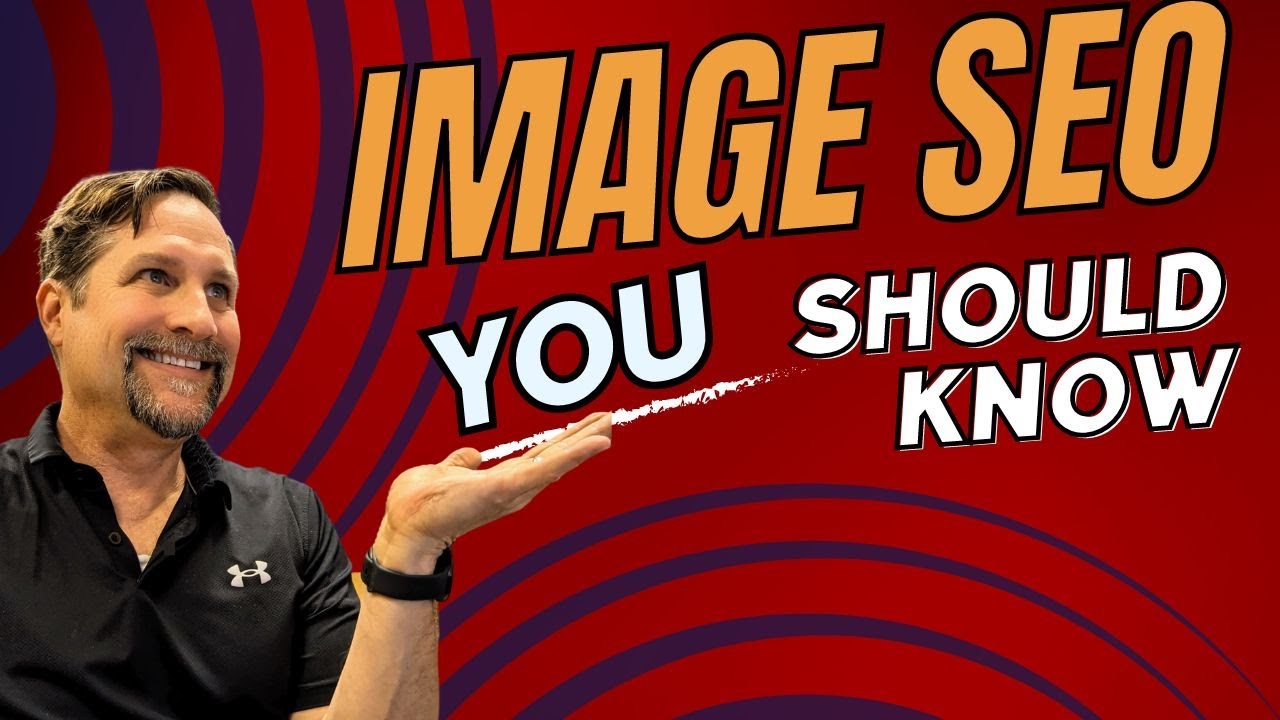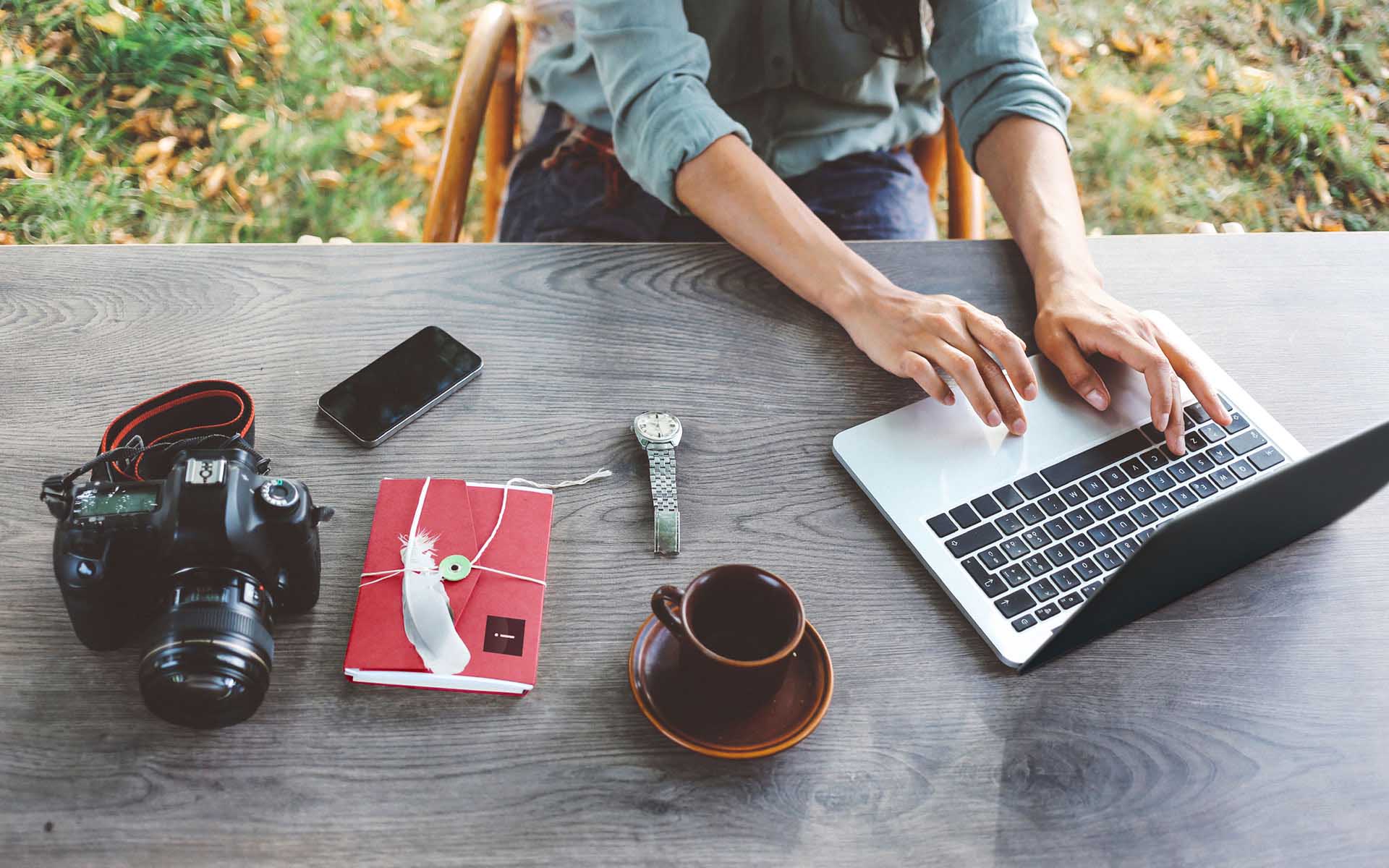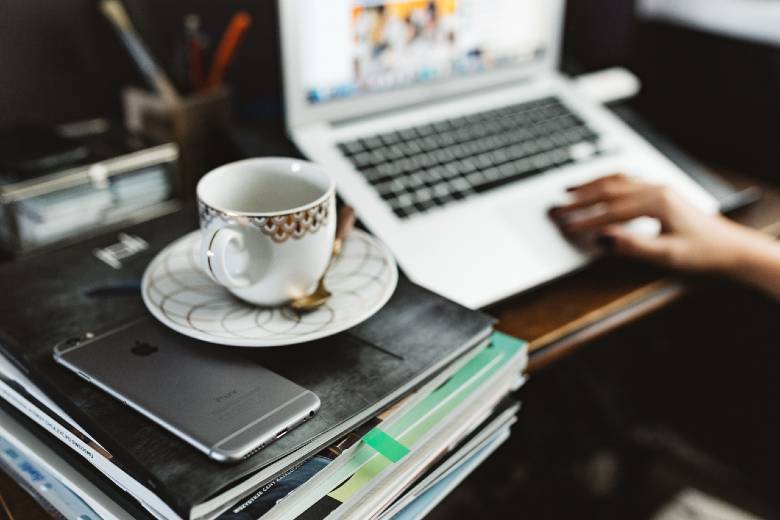
Blog images do more than just complement your text, they elevate your content and play a crucial role in keeping readers engaged. From improving SEO to enhancing user experience, the right images can make your posts stand out and draw in more traffic.
However, creating images that truly add value requires more than just picking a photo and hitting "upload." In this article, you’ll learn how to strategically design and optimize blog images to captivate your audience and boost your content's performance.
Why Blog Images Are Essential
Images are no longer just supplementary elements on a blog, they are an integral part of the content itself. The right image can significantly impact the success of your blog, influencing everything from SEO performance to reader engagement.
1. Psychological Impact On Users
Studies show that visual content is processed 60,000 times faster than text. This means that when a reader lands on your blog, an engaging image can capture their attention instantly, encouraging them to stay longer and explore more. Blog images evoke emotions, simplify complex ideas, and provide readers with a sense of what to expect from your content.
2. SEO Benefits
Search engines like Google prioritize high-quality, relevant content. Images help your content become more attractive to search engines when optimized properly. Content creationplays a crucial role in how well your blog ranks. Google can index your images, and having relevant alt text and proper image formats can make your blog more likely to rank higher in image searches and in regular organic search results.
3. Improved User Engagement
Content with images receives 94% more views than content without images. A well-placed image can break up long paragraphs, making the text more digestible and keeping the reader's attention. Furthermore, posts with images are more likely to be shared on social media, increasing your blog's reach and visibility.
Types Of Blog Images
1. Header Images
Header images are often the first thing readers see when they land on your blog. These images set the tone for the entire article and should capture the essence of the content. For example, if you're writing about travel tips for Scotland, a vibrant landscape photo could draw readers in and immediately tell them what to expect.
2. Inline Images
Inline images are scattered throughout the content to support the text. They can illustrate a point, provide visual examples, or simply break up the text to improve readability. These images should be directly related to the content and placed strategically to enhance understanding.
3. Infographics
Infographics are an excellent way to present complex data in a visually appealing and easy-to-understand format. If your blog contains statistics, processes, or comparisons, turning them into an infographic can help simplify the information and make it more engaging for readers.
4. Screenshots
Screenshots are incredibly useful for tutorials or product reviews. They allow readers to visually follow along with instructions or see a demonstration. Be sure to clean up your screenshots before using them (remove any sensitive information, and add annotations where needed).
5. Product Photos
If you're writing a product review or selling something on your blog, high-quality product images are essential. Clear, well-lit product photos increase trust with your audience and help potential customers visualize the item in real life.
6. User-Generated Content
Incorporating user-generated content (UGC) like testimonials, social media posts, or customer photos is a powerful way to build credibility. It also adds authenticity to your blog and shows that real people are engaging with your brand.
Best Practices For Creating Blog Images
1. Resolution & Quality
Always opt for high-resolution images. Blurry or pixelated visuals will diminish the professional look of your blog and can turn users away. Ensure that the resolution is at least 72 dpi for web use. However, don’t overdo it with excessively large images, as they can slow down your site’s load time.
2. File Size & Load Speed
Website speed is a critical ranking factor for SEO. Large image files can significantly slow down your page, leading to higher bounce rates and lower rankings. Use image compression tools like TinyPNG or ImageOptim to reduce file sizes without sacrificing too much quality.
3. Image Format
Understanding the differences between image formats is crucial:
- JPEG: Best for photographs and complex images with many colors.
- PNG: Ideal for images with transparency or simpler graphics.
- WebP: A newer format offering superior compression and quality, recommended for modern websites.
4. Alt Text & Accessibility
Alt text is important for both SEO and accessibility. Search engines can't "see" images, but they can read the alt text to understand what the image is about. For accessibility, alt text allows screen readers to describe images to visually impaired users. Be descriptive and include relevant keywords, but avoid keyword stuffing.
4. Consistent Branding
Your images should reflect your brand's style and tone. Using a consistent color scheme, fonts, and design elements helps strengthen your brand identity. By maintaining visual consistency, you can grow your blog fastand make it more recognizable to your audience. Tools like Canva allow you to create custom templates that align with your brand’s aesthetics.
15 Tools For Creating Better Blog Images In 5 Minutes
1. Canva
Best For: Beginners And Quick Design
Canva is a versatile, user-friendly tool that offers a vast library of templates, stock images, and design elements. Whether you're creating social media posts, blog headers, or infographics, Canva has templates that can be customized in minutes.
Key Features:
- Pre-made templates for various blog types
- Drag-and-drop functionality
- Extensive image library
- Free and paid options
2. Piktochart
Best For: Infographics
Piktochart excels at creating infographics. If your blog requires visualizing data, statistics, or processes, this tool allows you to easily design infographics that are both informative and visually appealing.
Key Features:
- Infographic templates
- Data visualization tools
- Easy-to-use editor
3. Snappa
Best For: Quick Social Media Graphics
Snappa is designed for creating social media graphics, blog post headers, and other visuals in just a few clicks. With its drag-and-drop interface and simple customization options, you can create polished images in no time.
Key Features:
- Access to free stock photos
- Pre-sized templates for blogs and social media
- Easy export options
4. Fotor
Best For: Photo Editing And Enhancements
Fotor offers powerful photo editing tools, making it a great option if you already have images but need to tweak them for your blog. You can adjust brightness, contrast, and saturation, add text, and apply filters.
Key Features:
- High-quality photo editing tools
- Collage maker
- Text overlays and filters
5. Visme
Best For: Creating Presentations And Infographics
Visme is perfect for bloggers who want to make visually engaging presentations and infographics. The platform allows for easy drag-and-drop creation of charts, graphs, and visual content.
Key Features:
- Infographic and presentation templates
- Data visualization tools
- High-quality stock images
6. Crello
Best For: Animated Images And Designs
Crello lets you create animated visuals that can make your blog posts stand out. It has a simple interface and templates for quick creation of social media posts, banners, and other blog visuals.
Key Features:
- Animations and GIFs
- Templates for various formats
- Easy drag-and-drop design
7. Adobe Spark
Best For: Quick Professional-Grade Designs
Adobe Spark is a great tool for quick and professional designs. It's perfect for bloggers who need polished visuals without spending too much time on complicated software.
Key Features:
- Templates for web and social media visuals
- Free and paid options
- Branding tools for consistent designs
8. Stencil
Best For: Quick Image Creation For Social Media And Blogs
Stencil is a fast image creation tool with a massive library of stock photos and icons. It allows you to make blog post headers, quotes, and social media images quickly.
Key Features:
- Over 5 million stock photos and icons
- Pre-made templates for different types of blog content
- Browser-based, no software installation required
9. Pixlr
Best For: Basic Photo Editing
Pixlr is a free, online photo editor perfect for bloggers who need to make quick edits to their images. You can crop, rotate, adjust colors, and apply filters with ease.
Key Features:
- Simple photo editing tools
- Cloud-based, no installation needed
- Multiple photo effects and filters
10. PicMonkey
Best For: Quick And Stylish Designs
PicMonkey is another excellent tool for quick design and image editing. With an easy-to-use interface, you can create banners, edit photos, and add text to images in minutes.
Key Features:
- Simple drag-and-drop functionality
- Image retouching tools
- Creative text and graphics options
11. BeFunky
Best For: Quick Image Enhancements And Collages
BeFunky offers a suite of image editing tools, including features for enhancing photos and creating collages. It's perfect for quickly improving your blog’s visual content.
Key Features:
- Photo editor, collage maker, and graphic designer in one
- Customizable templates
- Simple, intuitive interface
12. Venngage
Best For: Infographics And Reports
Venngage is a popular tool for creating professional infographics. Whether you want to display statistics or create a process diagram, Venngage’s templates allow you to put it together in minutes.
Key Features:
- Infographic templates
- Data visualization tools
- Easy-to-use design editor
13. RelayThat
Best For: Brand Consistency Across Platforms
RelayThat helps ensure brand consistency across all your blog images. This tool automatically adjusts your designs to fit various formats, ensuring your branding stays consistent no matter the platform.
Key Features:
- Brand consistency tools
- Pre-sized templates for blogs, social media, and ads
- Automated resizing options
14. Lumen5
Best For: Video And Image Integration
Lumen5 is primarily a video creation tool, but it also allows you to quickly combine images with text and music to create multimedia content. Perfect for bloggers looking to add video elements to their blog posts.
Key Features:
- Video creation with images
- Text overlay on videos
- Drag-and-drop editing
15. Glorify
Best For: E-commerce Blog Images
If you have an e-commerce blog, Glorify can help you create stunning product images, mockups, and promotional banners. It's tailored for creating images that drive sales and conversions.
Key Features:
- E-commerce-centric templates
- Product mockup generator
- Easy design tools for beginners
Optimizing Blog Images For SEO

🚀How to Optimize Images for SEO: Unveiling the Power of Image Optimization! 🔥
Optimizing your images for SEO is just as important as creating them. Proper optimization ensures your images load quickly and are discoverable by search engines.
1. Image File Naming
Always use descriptive filenames for your images. Instead of using a default file name like "IMG_1234.jpg," rename your image to something relevant like "scotland-highlands-landscape.jpg." This helps search engines understand what the image is about and improves image search rankings. Implementing this is one of the best strategies to drive visitors to your blog, as it enhances your SEO and increases visibility in image searches.
2. Image Compression
Images can be large files, and large files slow down your site. Tools like TinyPNG or ImageOptim can help reduce the file size without compromising image quality. This boosts page load times and improves your SEO.
3. Lazy Loading
Lazy loading is a technique that delays the loading of images until they are needed (i.e., when they come into view as the user scrolls down). This can significantly speed up your page load time, especially on image-heavy pages.
4. Schema Markup
Using structured data (Schema Markup) for images helps search engines understand the context of the image. It can improve the chances of your image appearing in rich snippets and image search results.
Common Mistakes To Avoid
1. Using Low-Quality Images
Low-quality or blurry images hurt the professional image of your blog. Always use high-quality images that are clear and visually appealing.
2. Ignoring Image SEO
Failing to optimize images for SEO is a missed opportunity. Always add descriptive alt text, optimize file sizes, and use the right image format to improve both user experience and SEO.
3. Overloading Pages With Too Many Images
Too many images on a page can slow down the load time and overwhelm the reader. Ensure that each image serves a purpose and doesn't clutter the page.
4. Ignoring Accessibility
Accessibility is a critical part of creating an inclusive web experience. Always include alt text and consider how your images will be viewed by people with disabilities.
FAQs
What Is The Best Size For Blog Images?
The ideal image size depends on where the image will be used. For blog headers, aim for 1200 x 675 pixels. Inline images should typically be around 800 x 600 pixels. Always aim for high resolution while keeping file size small.
How Do Images Impact SEO Rankings?
Images can enhance SEO by providing additional context through alt text, descriptive filenames, and by improving user experience (reducing bounce rates). Optimized images help improve load speed, which is a ranking factor for Google.
Can I Use Images From Google In My Blog?
You should avoid using images from Google unless they are licensed for reuse. Instead, use stock photo sites like Unsplash or Pexels, or create your own original images.
How Can I Make My Images More Engaging?
To make your images more engaging, use high-quality visuals, incorporate text overlays when appropriate, and choose images that are relevant and emotionally compelling.
How Do I Optimize Images For Mobile Devices?
Responsive design ensures that images adjust to different screen sizes. Tools like responsive image formats (WebP) and lazy loading help optimize mobile performance.
Conclusion
The power of well-crafted blog images goes far beyond aesthetics. By following best practices for design and SEO, you can create visuals that not only engage readers but also help your content perform better in search results.
Take these strategies and start transforming your blog images into essential assets that enhance both the user experience and your SEO efforts.

